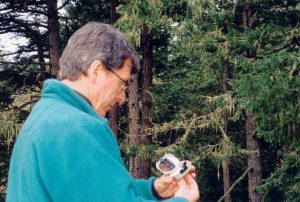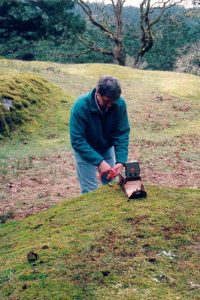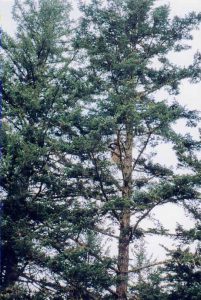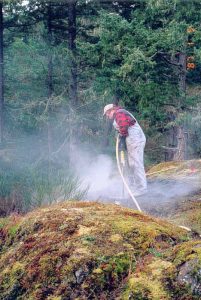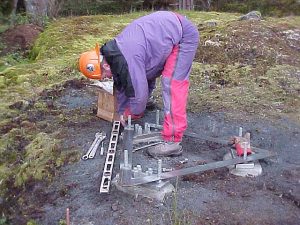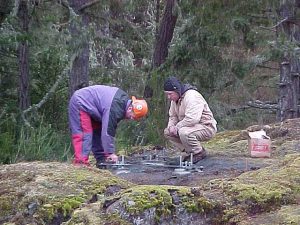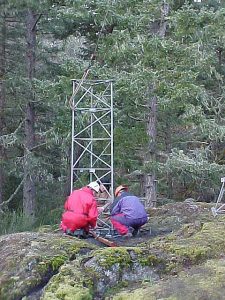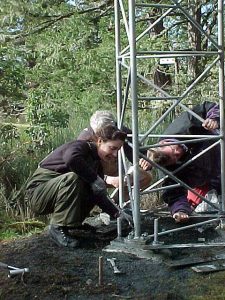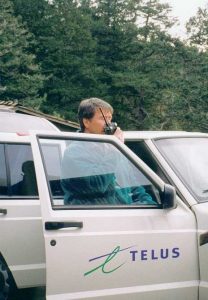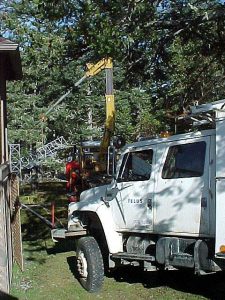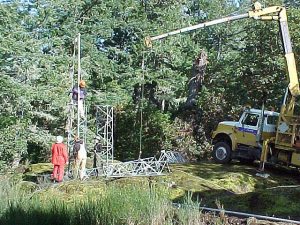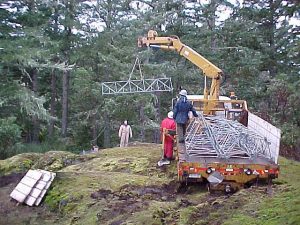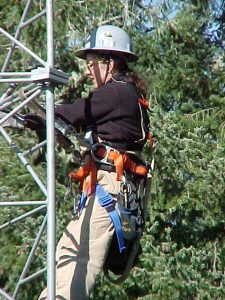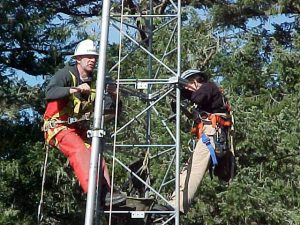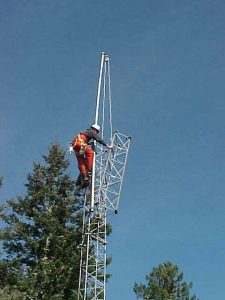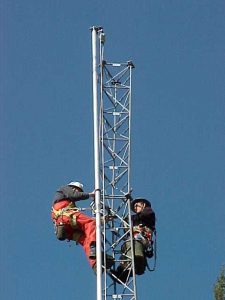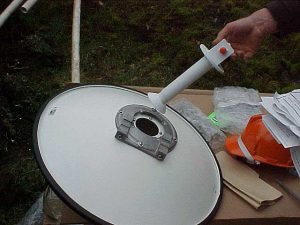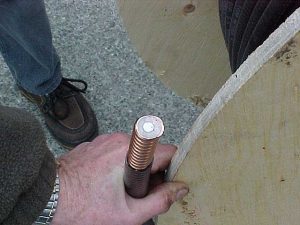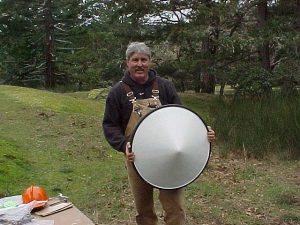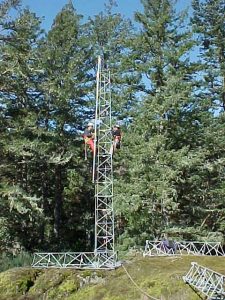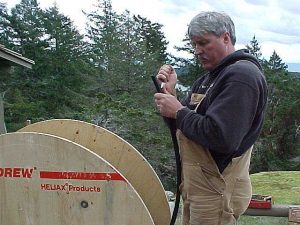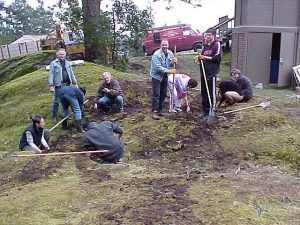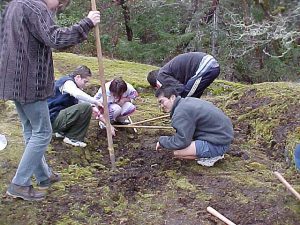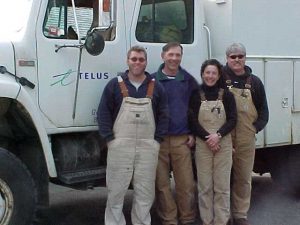ARCHIVAL HISTORY:
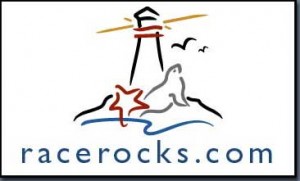 A Bold Initiative
A Bold Initiative
racerocks.com utilizes 21st century technology to maximum advantage to create a dynamic educational web experience utilizing the extraordinary marine eco-system at Race Rocks, Canada’s most southerly point in the Pacific.
Real time streaming video will webcast digital images of marine life from above and below the sea at Race Rocks. In addition, a complete environmental scan will be continually transmitted from the site using an array of data sensors.
The knowledge of the First Nations will be explored and explained as the Salish people share generations of experience in living in harmony with the abundance that once dominated this region and is now threatened.
Creative educators will develop internet-based curriculum to stimulate students and teachers to engage fully in the racerocks.com educational program. Researchers will share their studies and discoveries as we gain a new and deeper understanding of the ecosystem.
The Place
 For centuries, deep ocean currents and the great rivers of the Georgia Basin have converged in the Strait of Juan de Fuca between southern Vancouver Island and Washington State. Race Rocks reveals itself as nine rocky outcrops thrust from the ocean floor in the middle of the strait.
For centuries, deep ocean currents and the great rivers of the Georgia Basin have converged in the Strait of Juan de Fuca between southern Vancouver Island and Washington State. Race Rocks reveals itself as nine rocky outcrops thrust from the ocean floor in the middle of the strait.
For generations the people of the Salish Nation prospered in this region at the entrance to the Salish Sea. The extraordinary richness of this diverse eco-system represented by Race Rocks is valued today as it was then. Race Rocks has been an ecological reserve since 1980 and is likely to become Canada’s first internationally recognized Marine Protected Area.
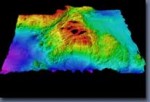 The small, rocky outcrops are home to seals, sea lions, elephant seals and birds, as well as the buildings and equipment of the Race Rocks Lighthouse. These outcrops are literally the tip of the ecosystem. New leading-edge bathymetry reveals Race Rocks as a giant underwater mountain. The diversity of marine life is breathtaking and still not fully explored. The teachings of Salish elders merge with more recent science to explain the mysteries of nature at Race Rocks.
The small, rocky outcrops are home to seals, sea lions, elephant seals and birds, as well as the buildings and equipment of the Race Rocks Lighthouse. These outcrops are literally the tip of the ecosystem. New leading-edge bathymetry reveals Race Rocks as a giant underwater mountain. The diversity of marine life is breathtaking and still not fully explored. The teachings of Salish elders merge with more recent science to explain the mysteries of nature at Race Rocks.
The Technology
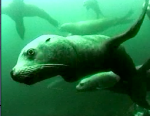 Recent developments have made a complex real time streaming video site possible. As many as seven digital cameras and an array of data sensors above and below the ocean at Race Rocks will collect information. Connected by fire wire to computers on Great Race Island, the signal will be compressed and transmitted by broad band radio from the top of the Race Rocks light tower direct to nearby Pearson College. From Pearson College, through high speed fiber links to the racerocks.com server, the pictures and data will be available throughout the internet. Two-way interactive capability is being incorporated into the design to allow for specific educational programming.
Recent developments have made a complex real time streaming video site possible. As many as seven digital cameras and an array of data sensors above and below the ocean at Race Rocks will collect information. Connected by fire wire to computers on Great Race Island, the signal will be compressed and transmitted by broad band radio from the top of the Race Rocks light tower direct to nearby Pearson College. From Pearson College, through high speed fiber links to the racerocks.com server, the pictures and data will be available throughout the internet. Two-way interactive capability is being incorporated into the design to allow for specific educational programming.
The Partners
Pearson College– is one of ten United World Colleges located around the world. Two hundred students from over 80 countries study the International Baccalaureate curriculum during their two years at Pearson College. Garry Fletcher, a faculty member teaching Environmental Systems and Biology at Pearson College, is the educational director of racerocks.com. Garry and his students will guide the educational content of the site. Pearson College operates the former Race Rocks light station facilities as a education centre under an agreement with BC Parks. Pearson College is the lead proponent and partner directing the racerocks.com project.
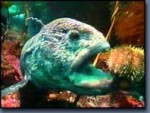 LGS Group Inc. – is Canada’s largest full service IT consulting firm with 2100 employees in 20 offices in Canada, Europe and the US. LGS is donating the time and resources to provide project management and web design services in the creation of racerocks.com. Along with their ability to capitalize on emerging internet technologies to promote the project, LGS brings essential knowledge, skills, and expertise.
LGS Group Inc. – is Canada’s largest full service IT consulting firm with 2100 employees in 20 offices in Canada, Europe and the US. LGS is donating the time and resources to provide project management and web design services in the creation of racerocks.com. Along with their ability to capitalize on emerging internet technologies to promote the project, LGS brings essential knowledge, skills, and expertise.
Telus– a leading Canadian telecommunications company, is providing the bandwidth and server capability to host racerocks.com. Skilled technical staff at Telus have assisted in the development and implementation of the project assuring high-speed delivery to the internet and accessibility to a large audience. Telus is donating this component to racerocks.com.
Vancouver Aquarium Marine Science Centre-a leading organization in marine research and public education on the West Coast of Canada. The Marine Science Centre has committed a significant contribution of funds and expertise to the project. In return it will gain a new window for aquarium visitors into an ecologically sensitive marine world at the South tip of Vancouver Island.
Government Agencies- racerocks.com has received assistance from the Department of Fisheries and Oceans in many aspects of the project development. BC Parks has provided the use of buildings and facilities at Race Rocks. Both levels of government are working cooperatively to create the Race Rocks Marine Protected Area.
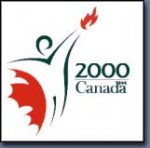 Millennium Partnership Fund– racerocks.com would not have been possible without funding from the Canadian Millennium Partnership Fund of the Government of Canada. We are very grateful to the Federal Government and all those who assisted us in our application.
Millennium Partnership Fund– racerocks.com would not have been possible without funding from the Canadian Millennium Partnership Fund of the Government of Canada. We are very grateful to the Federal Government and all those who assisted us in our application.
Affiliated Organizations
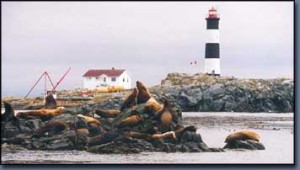 http://www.racerocks.com(now https://www.racerocks.ca)
http://www.racerocks.com(now https://www.racerocks.ca)

